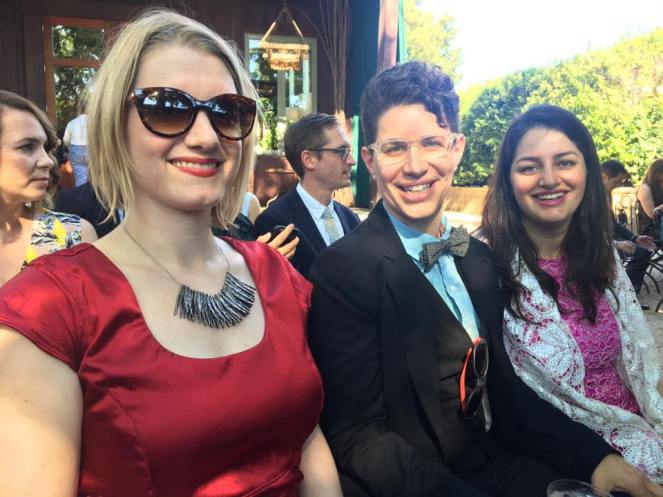Beginning Sewing
This weekend, I taught my coworker and friend’s daughter, Adeline, how to sew a simple wrap skirt. Here she is wearing it! She did a fantastic job, and it was a lot of fun teaching her.
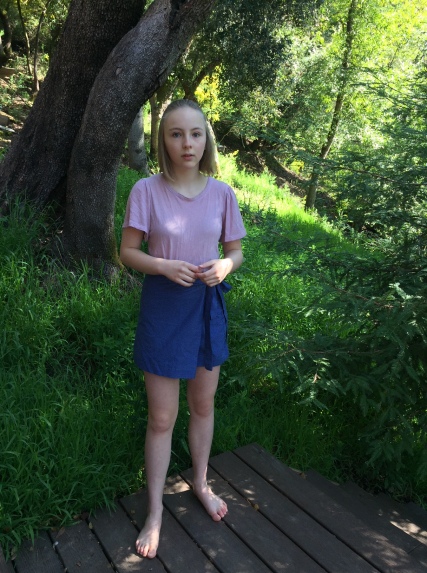
The pattern is Simplicity 8133. The design and lines of the skirt was great, and instructions were given for measuring yourself, selecting fabric, etc. However – it also included a few things that seemed unnecessary and difficult for a beginner:
- The pattern instructions tells you to hand-baste the front skirt edges (the pieces that wrap over each other in the front. We sewed them down with a machine straight stitch.
- The pattern is also missing clear placement for the ties and, because of the way it’s constructed, it’s very easy to catch the wide edges of the ties when you’re sewing them into the waistband. A wider waistband draft or clearer instructions would fix that.
- Hemming with a machine hem stitch is a tricky skill, and it’s easy to catch the fold of the fabric when you’re starting out. We folded them hem under and pressed, then topstitched it down.
- The side seams aren’t completely necessary – while they add shaping, you could open them to make the skirt more easily reversible.
- Similarly with the waistband: to make this even more basic, you could opt out of the waistband altogether, and simply add that waistband height to the length of the skirt.A sketch of the design, and then an adapted design we might try next time to make it reversible:
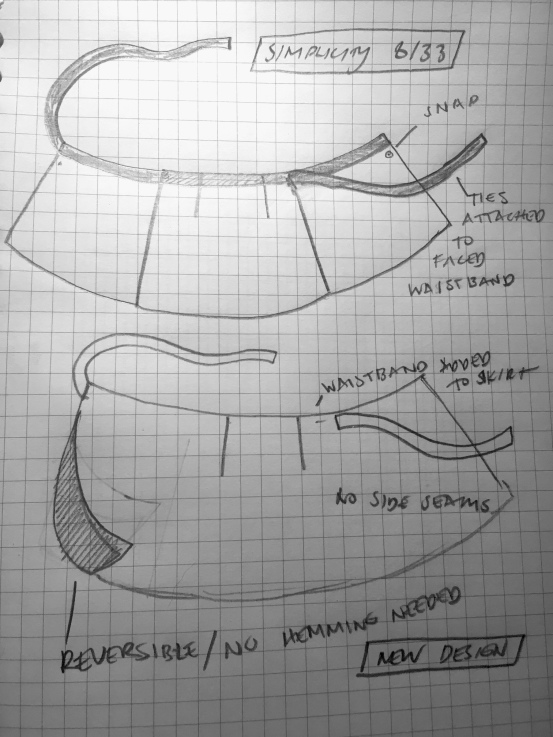
Some general takeaways for teaching someone to sew clothing:
- Limit the speed of the machine presser foot if possible.
- Explain the importance of proper ironing technique
- Start with a project they’re interested in making within their skill ability. A wrap skirt, simple tank top (no sleeve setting), or bag/pouch seem like good starts.
- Take accurate measurements beforehand.
- Explain ease, or the amount of room allotted in a pattern. Wide leg pants have more inherent ease in their design, which basically just means the added room for movement in a pattern.
- Finished garment measurements for bust and hips are something I didn’t learn about til a few years ago. For Big 4 patterns (McCalls/Vogue/Simplicty/etc) these are printed on the tissue of conventional patterns, instead of the outside envelope – on many indie patterns, they’re often much easier to find. Knowing these numbers makes it easier to determine whether you need to go down, or up a size.




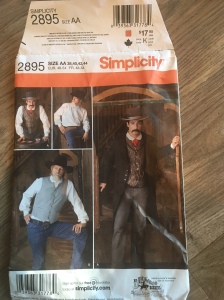



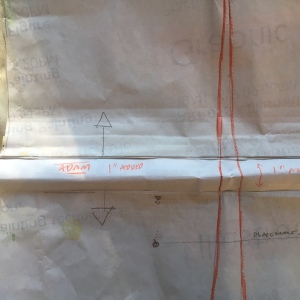





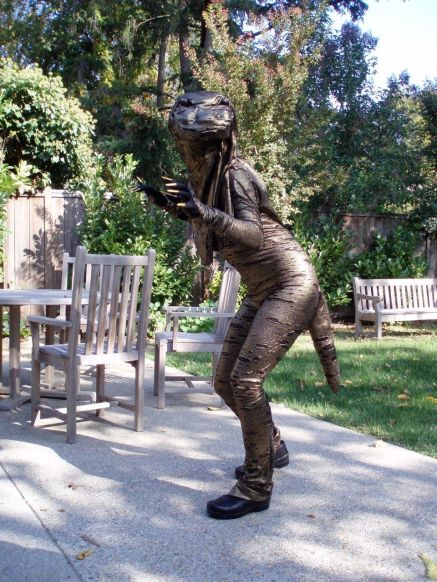
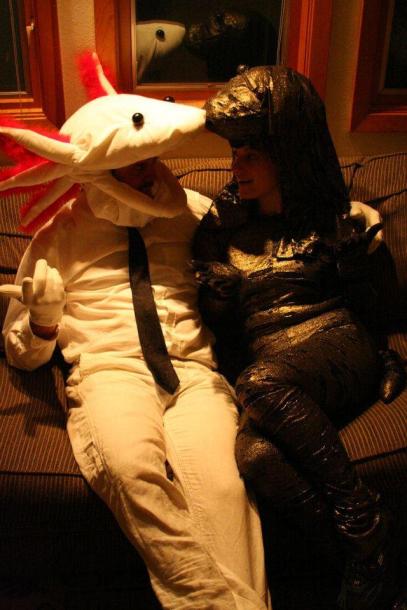
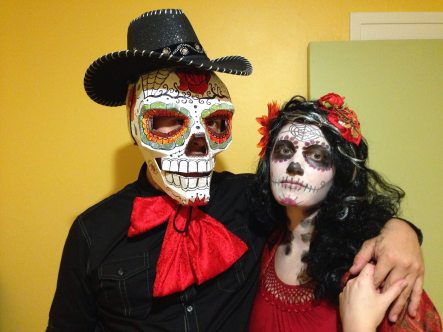
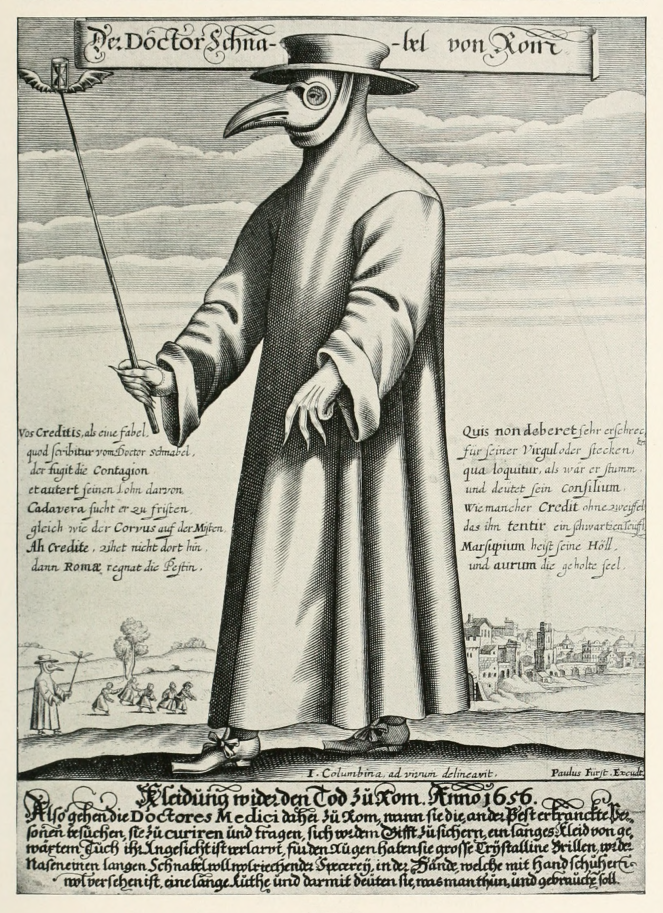
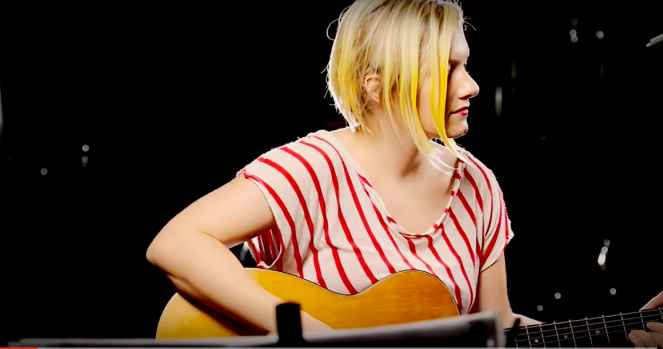 An old make, but one I have worn literally to death. This post is post-mortem, as the shirt’s stitching basically fell apart due to the fact that I don’t have a serger: sewing cheap knits on the bias without one is NOT recommended. While I like the look of the stripes on the diagonal, I don’t love how gape-y the neckline is: I should have used stabilizer or clear elastic, but until I made my
An old make, but one I have worn literally to death. This post is post-mortem, as the shirt’s stitching basically fell apart due to the fact that I don’t have a serger: sewing cheap knits on the bias without one is NOT recommended. While I like the look of the stripes on the diagonal, I don’t love how gape-y the neckline is: I should have used stabilizer or clear elastic, but until I made my 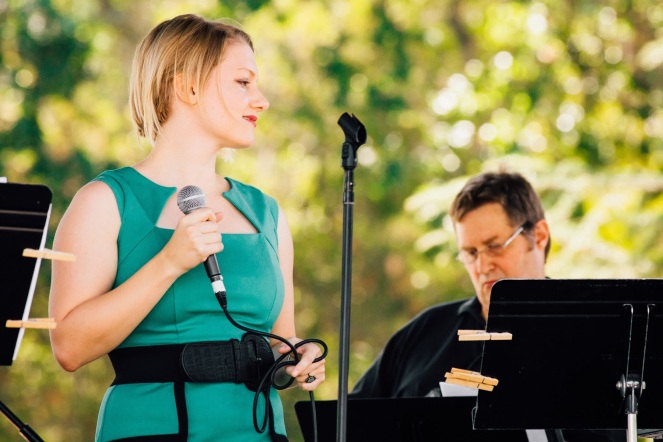
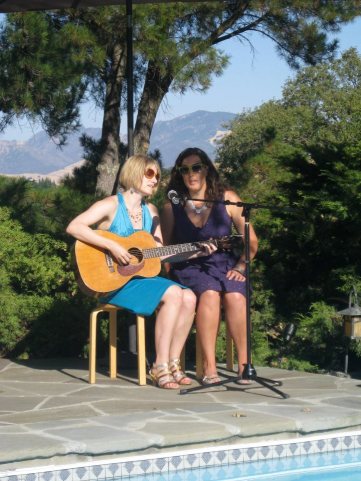




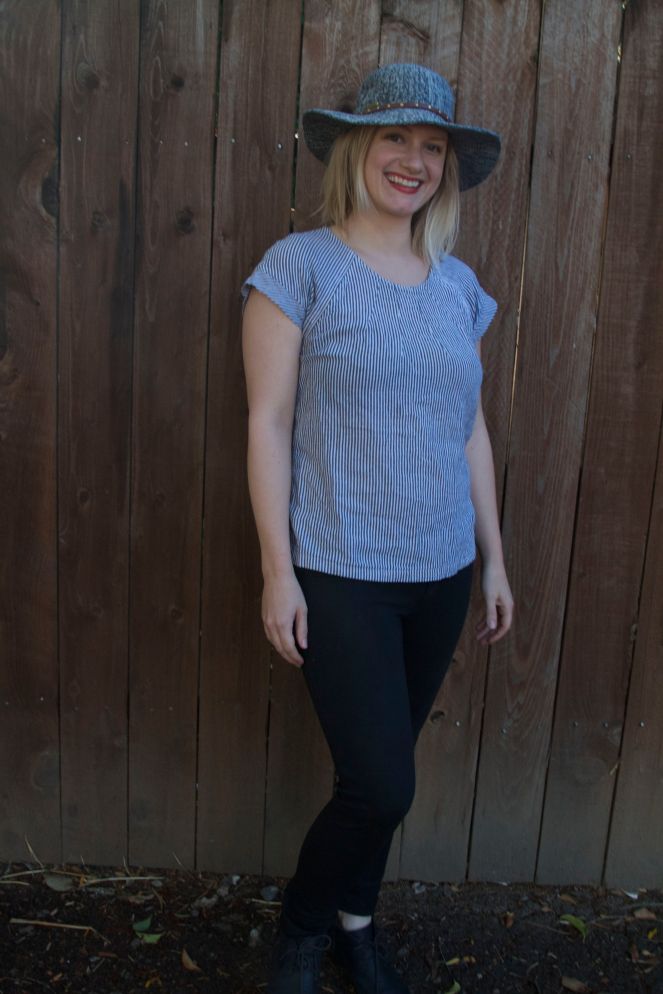
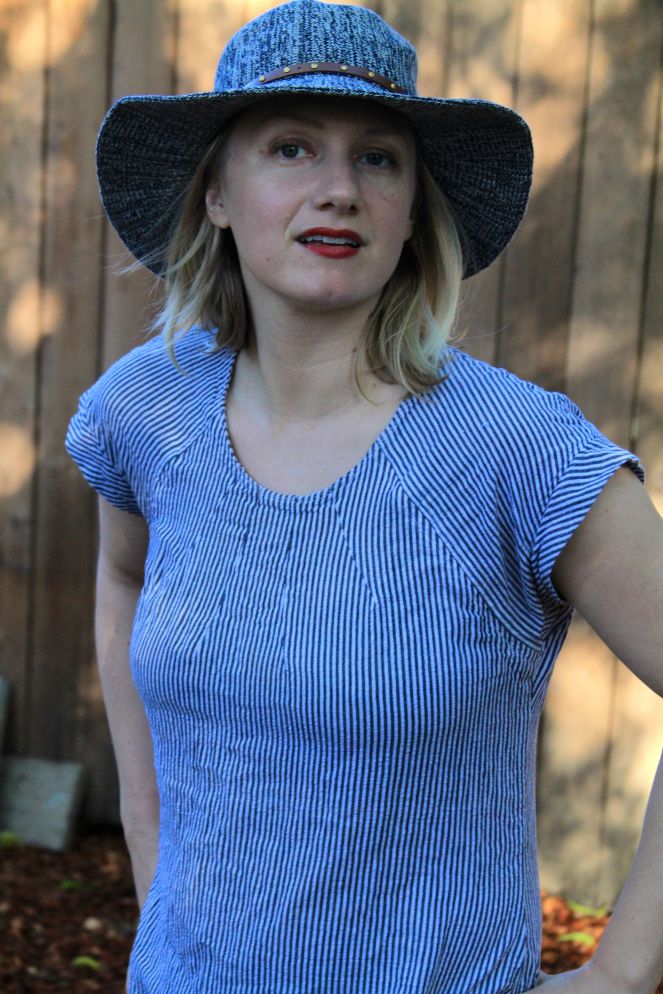
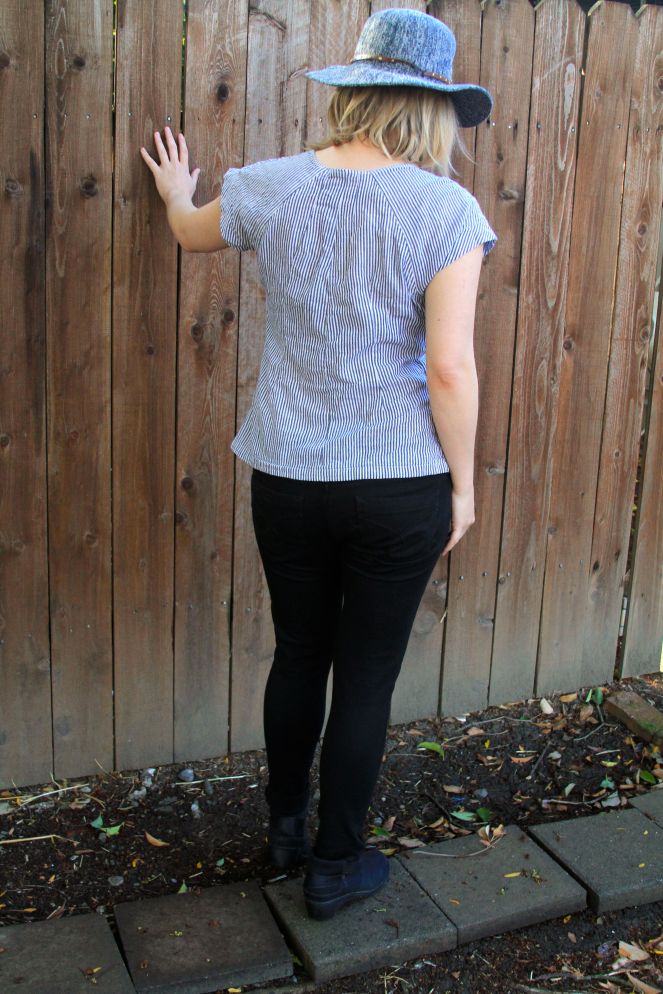 Since making this blouse, I have made two more Belcarras – one in a polyester from Joann’s, and one from linen – and I sized down to an 8, without an FBA. Both fit fairly well, but the issue with the gaping neckline remains, and I still like this one the best. I recently took a
Since making this blouse, I have made two more Belcarras – one in a polyester from Joann’s, and one from linen – and I sized down to an 8, without an FBA. Both fit fairly well, but the issue with the gaping neckline remains, and I still like this one the best. I recently took a 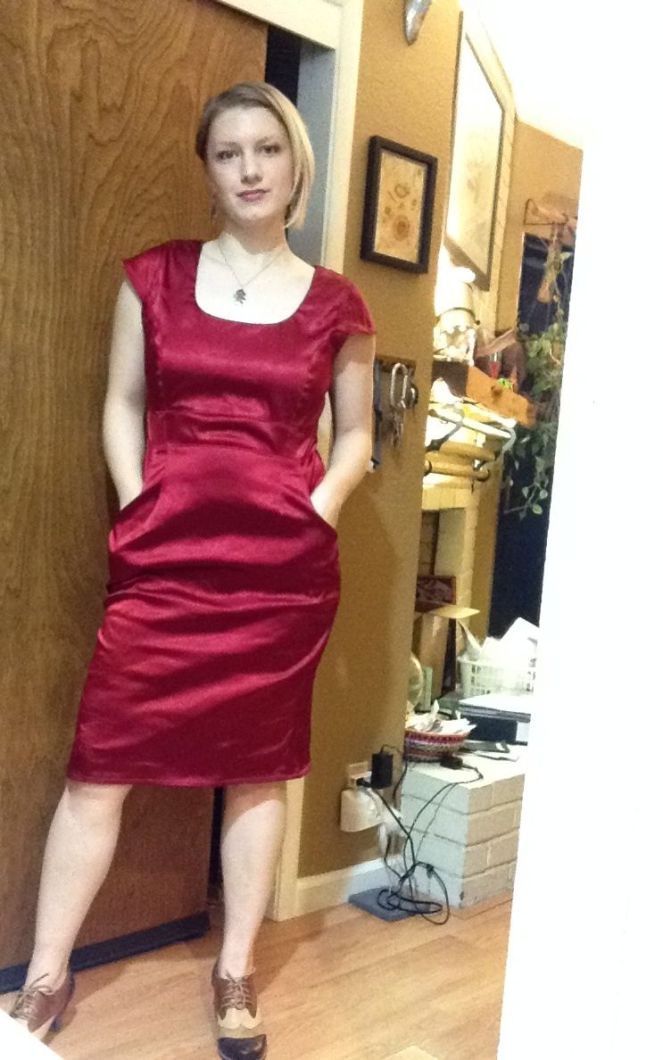 “…The lady in red is dancing with me, cheek to cheek,
“…The lady in red is dancing with me, cheek to cheek,